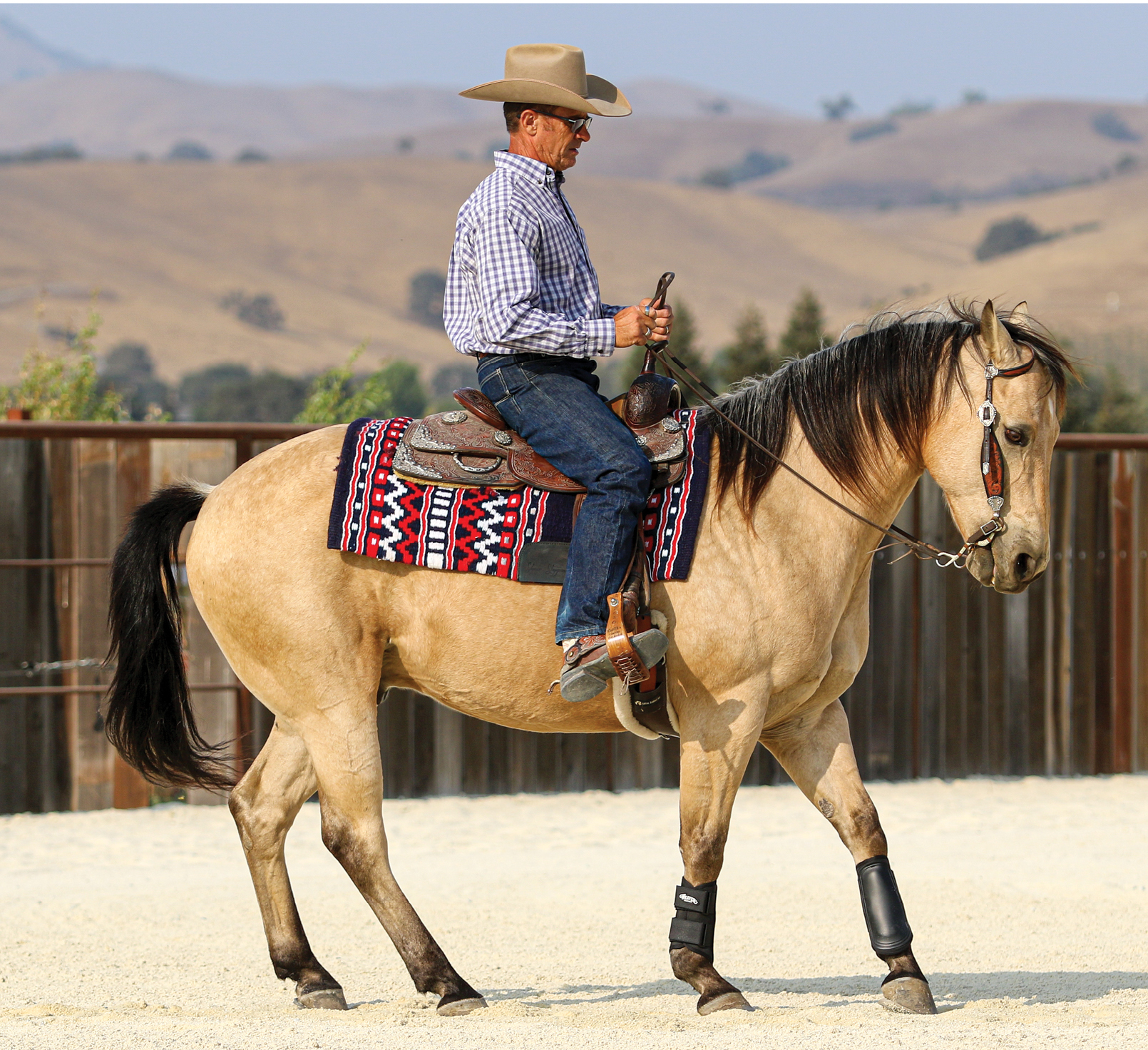The purpose behind a half-halt is to redistribute your horse’s weight from front to back—almost creating a slight squat as he engages his hind end—by using your hands and legs. And when done correctly, it’ll a very subtle move.
[WARWICK: IMPROVE YOUR HORSE’S TRAIL BEHAVIOR]
Here I’ll show you, through series of trot-walk-trot transitions, how your horse can learn to anticipate that when you close your fingers, you want him to “sit” just slightly, and then use your legs to push him back up into a forward trot.
1. Get the ‘Sit’
Before your horse can do a half-halt, he has to be able to do a full halt—and a good one. Since a half-halt is a just a readjustment of your horse’s weight from the front to the back, when you ask for your horse to slow down; he needs to engage his hind end and have his hind legs come up underneath himself. It’s almost as if he’s going to sit or slightly squat.
To get that sit, go to your fingers and ask for the slow down, your horse should respond to the cue and start to stop.

2. Keep It Going
To teach it, start by trotting around. You’ll keep your rein loose and use your leg to push your horse forward. When you ask for the slow down, use a two-rein stop to slowly go down to a walk, and then immediately push your horse back up to a trot. Because you’ve practiced your stop and have that “sit” motion, your horse should slow down and readjust his weight to his hind end as you tighten your fingers on the reins and release your legs.
As you become more comfortable asking for the half-halt cue, gradually make that slow-down and speed-up transition closer together. At the trot, ask for the shut-down cue to rock his weight back to an almost walk, then cue him back into the trot.

3. Corrective: Back-Up
Each time you ask for this maneuver you have to make a judgement in that split second if you’re going to get enough sit and enough come-back. If you close your fingers around the reins but don’t have the sit and you just follow through with your leg, all you’ll get is the forward, and not the redistribution of weight.
If your horse doesn’t have enough sit when you ask for the half-halt, immediately stop and softly back your horse to help get his weight back on his hind end. When you do that, make sure that your horse is engaged as you back him. After you finish backing, trot forward and try again. Do it several times in succession as you trot around and feel how your horse rounds up underneath you.
When you feel your horse rocking back as you go to your reins, you can go back to working the half-halt.

4. End Result
Eventually when you cue for the half-halt, you won’t even go from a trot to a walk. Instead, he’ll sit back on his hocks and then go back into a forward trot.
Once you can successfully use your hand and leg cues to get that response, you can start using the maneuver to help with other parts of riding, like working on collection. It can also help prepare your horse to execute a maneuver.

5. Don’t ‘Kick & Pull’
A key thing to remember when working on the half-halt is that your hand and leg cues must be cohesive with each other. You can’t start kicking and pulling on your horse at the same time. If you do that, all you’re going to do is confuse and frustrate him.
[LISTEN: THE RIDE PODCAST WITH WARWICK]
You need to time your hand and leg cues correctly. To time your cues, you first need to make sure your horse sits back on his haunches when your fingers close around the reins. Also, make sure your leg cue pushes your horse back forward. Once your horse responds well to both your hand and leg cues, you can start to put them together for a seamless half-halt.






